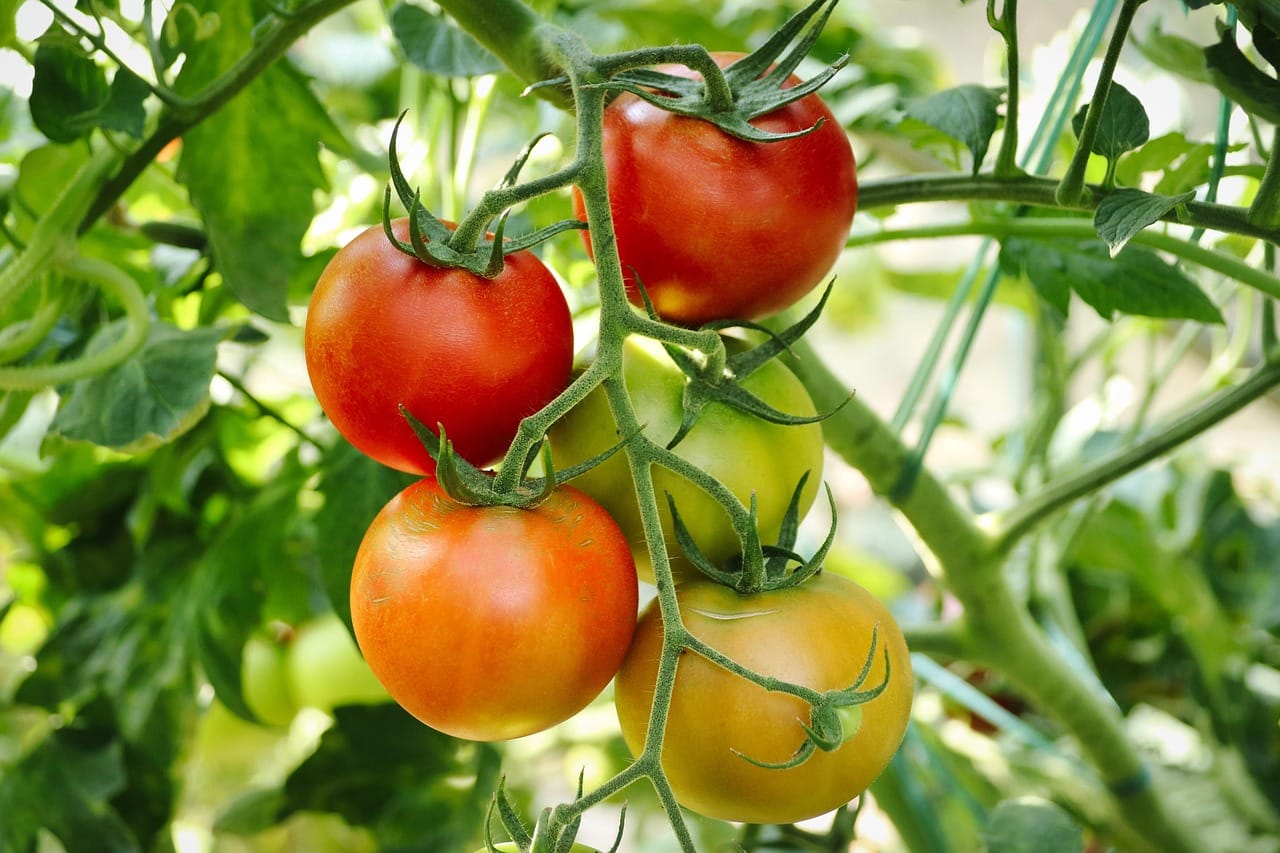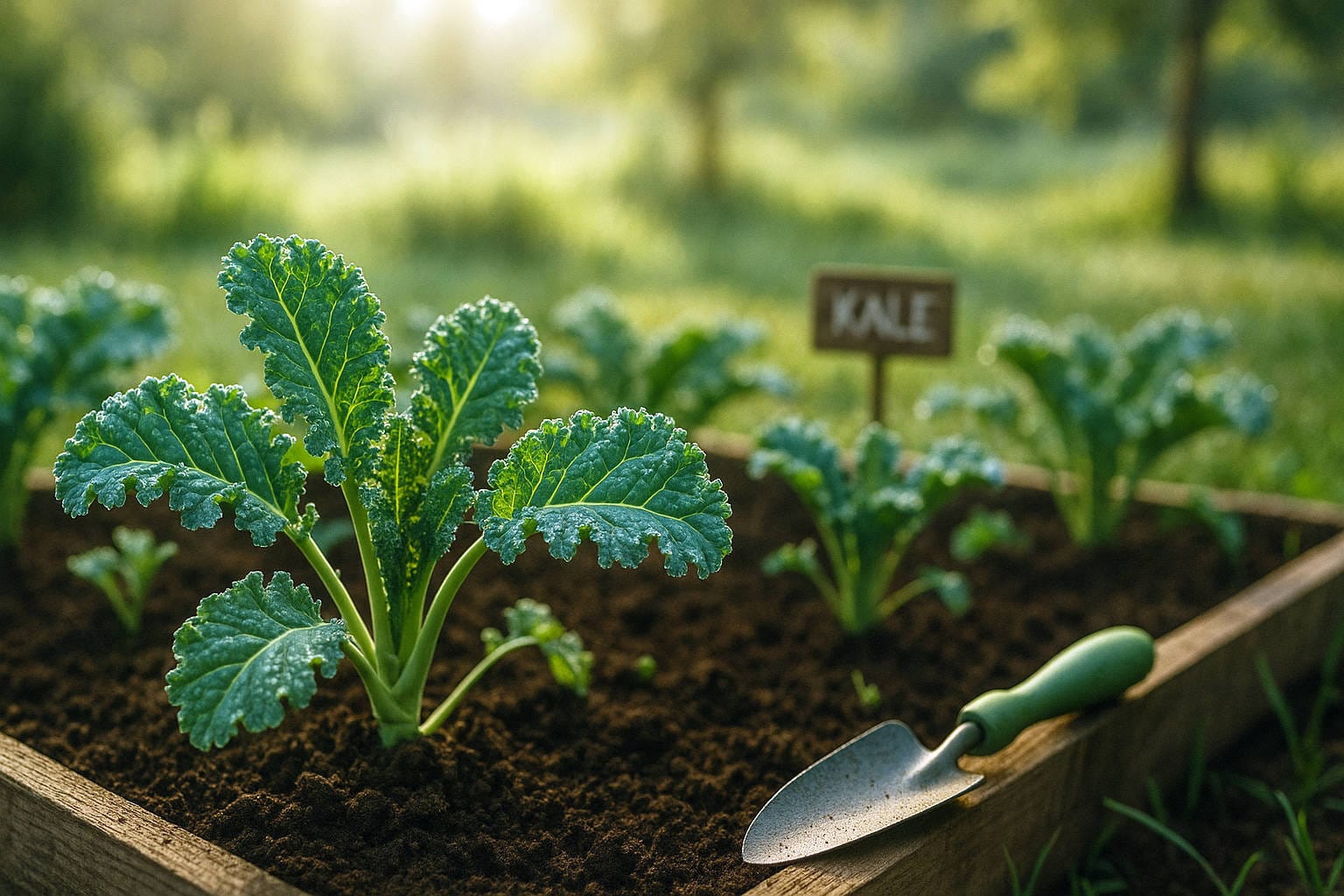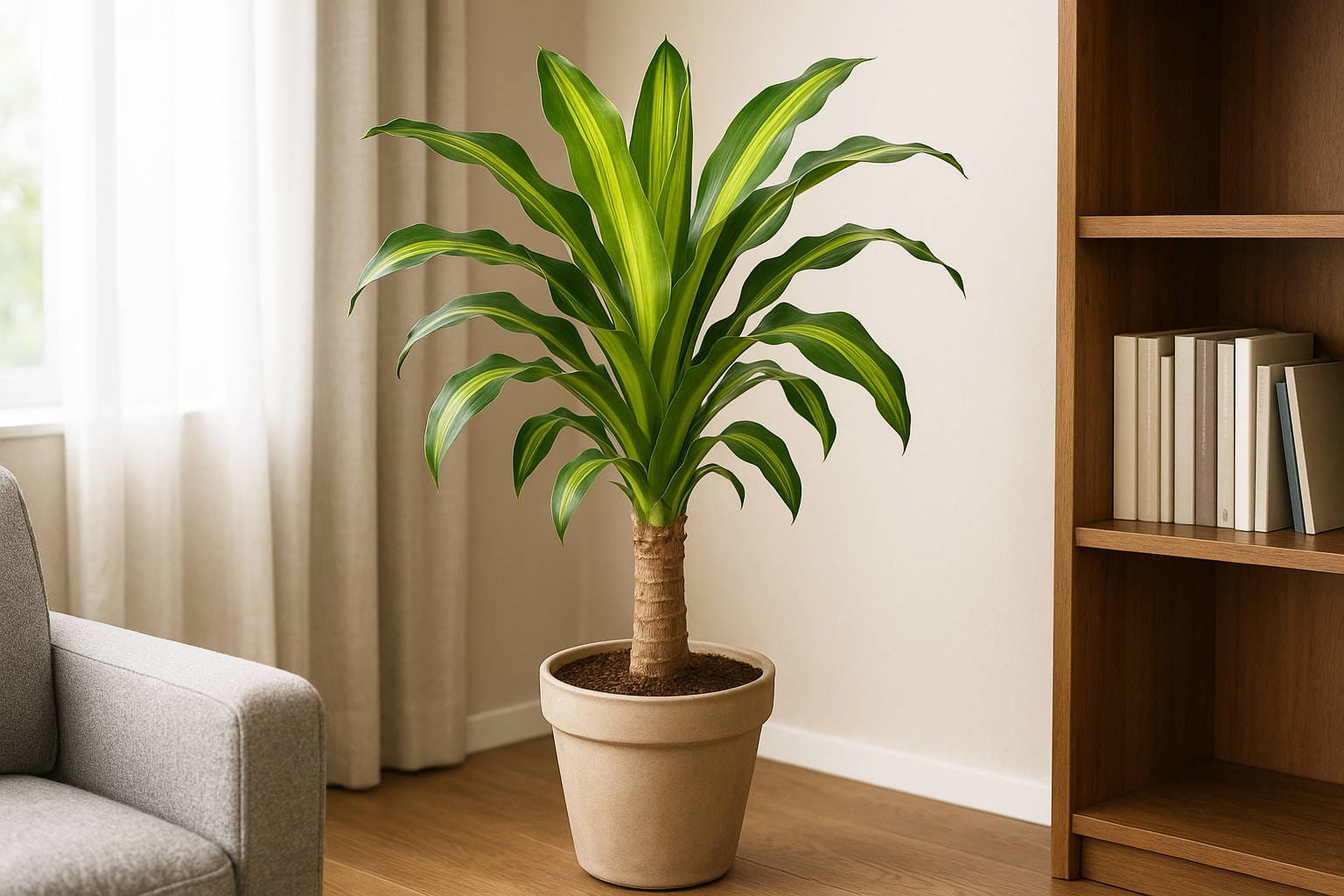So, you want to grow your own tomatoes but don’t have a big garden? No problem. You can absolutely grow tomato plants in pots—and trust us, it’s easier (and more fun) than you might think.
In this guide, we’ll walk you through everything you need to know: why growing tomatoes in containers is such a smart move, how to choose the right tomato variety, what kind of pot and soil you should use, and how to actually plant and care for them.
We’ll also get into common mistakes (so you don’t waste time or tomatoes), share some expert tips, and answer the questions almost everyone has at some point.
You don’t need a greenhouse, fancy tools, or even a yard. Just a sunny spot, the right setup, and a little attention. You might be working with a balcony in Chicago, a patio in London, or a veranda in Melbourne—whatever the case, this guide will help you grow tomatoes that are actually worth bragging about.
And hey—stick with us till the end. You’ll not only know how to grow tomato plants in pots, but you’ll feel totally confident doing it.
Why Grow Tomato Plants in Pots?
If you’ve got a small space or just want more control over how your plants grow, learning how to grow tomato plants in pots is a total game-changer.
First off, pots make gardening possible almost anywhere. You can grow tomatoes on a balcony, a porch, a sunny driveway, or even by a bright window indoors.
You don’t need a backyard, and that alone makes container gardening super appealing to a lot of folks—especially in cities or apartments.
But it’s not just about space. Growing tomatoes in containers gives you control over the soil quality, drainage, and even pests.
Got squirrels digging up your garden beds? Not a problem when your tomato plant’s living its best life in a pot, off the ground.
Another big plus: portability. If it gets too windy, too rainy, or too shady in one spot, you can just move the container to a better location. Try doing that with an in-ground tomato.
There’s also a lot less bending and kneeling involved. If you set your pots on a raised surface, caring for your tomatoes becomes way easier on your back.
Oh, and let’s not forget—you can still grow tons of tomatoes in pots. Cherry tomatoes, Roma, even bush-style slicers do great in containers when you treat them right.
And they’ll reward you with fresh, sun-warmed fruit that actually tastes like a tomato (unlike those sad store-bought ones).
You may also like:
- How to Prune Hydrangeas: A Complete Beginner’s Guide for Bigger Blooms
- How to Care for Poinsettias: The Ultimate Guide for Healthy Holiday Blooms
Choosing the Right Tomato Variety for Pots
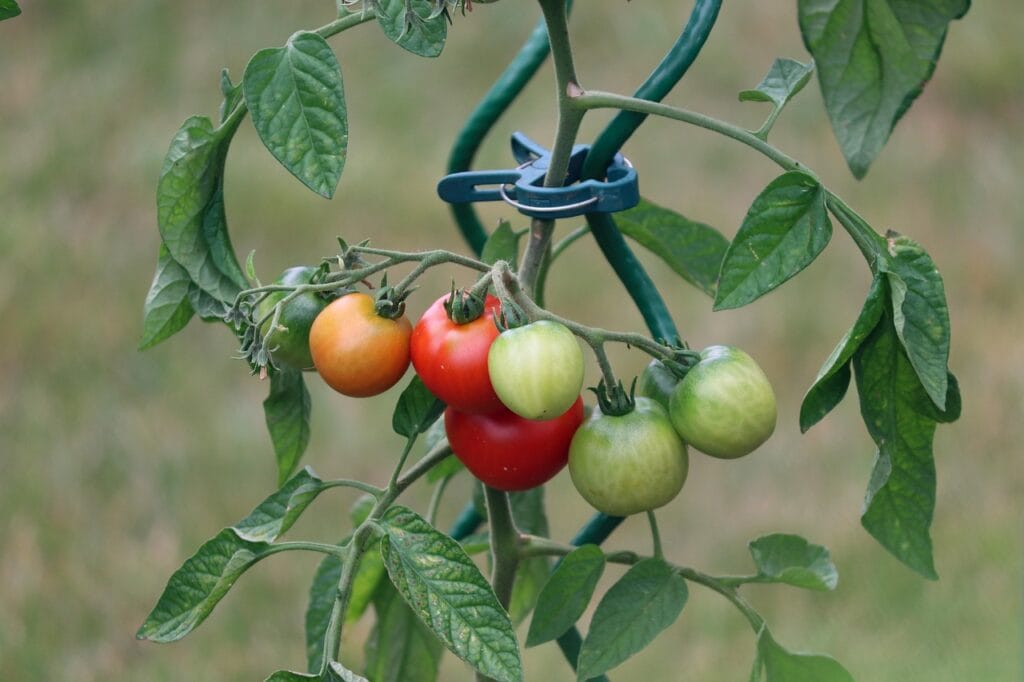

Not all tomatoes are built the same—some go wild and need loads of space, others are compact and super chill. So if you’re serious about learning how to grow tomato plants in pots, the first smart move is picking the right type.
Start by looking at the plant’s growth habit. Tomatoes come in two main categories:
- Determinate tomatoes (also called “bush” varieties) are ideal for containers. They grow to a certain height, produce a bunch of fruit over a short period, then call it a day. They’re low-maintenance, don’t need as much staking, and won’t try to take over your patio.
- Indeterminate tomatoes, on the other hand, grow like vines and can get massive. They’ll keep producing fruit as long as they’re alive, which sounds great, but they usually need big cages or trellises. Not impossible in a pot—just trickier.
If you’re just getting started, stick with determinate types. They’re more forgiving and still give you a solid harvest.
Some great tomato varieties for containers:
- Tiny Tim – perfect for small pots or windowsills.
- Bush Early Girl – fast, compact, and flavorful.
- Patio Princess – super tidy and reliable.
- Tumbling Tom – great for hanging baskets or trailing over the edge of a large container.
- Roma (bush type) – compact and awesome for sauces.
And here’s a little bonus tip: check the seed packet or plant tag. If it mentions “ideal for containers” or “compact growth,” you’re on the right track.
You may also like:
- How to Prune Roses Like a Pro: Step-by-Step Guide for Healthy Blooms
- How to Care for Ponytail Palm: The Ultimate Guide for Beginners
Selecting the Best Container for Tomato Plants
Now let’s talk pots—because the container you choose can seriously make or break your tomato-growing game.
To grow tomato plants in pots successfully, size matters. Tomatoes have deep root systems, so the bigger the pot, the better.
A good rule of thumb? Go for at least 5 gallons, but 7 or more is even better. If you’re using inches, that’s a pot with a 12-inch diameter and depth minimum.
Now, what about material? You’ve got options:
- Plastic pots are lightweight, affordable, and they don’t dry out as fast. Just make sure they’re thick enough to hold up to sun exposure.
- Terracotta pots look great but dry out super quickly, which means more watering. Not ideal if you’re in a hot climate.
- Fabric grow bags are breathable, easy to move, and root-friendly. These are a favorite among a lot of home gardeners.
- Self-watering containers can be helpful, especially if you tend to forget a watering or two, but they need good drainage and might not be the best for bigger tomato varieties.
Speaking of drainage—don’t skip this part. Your pot needs holes at the bottom. No holes = root rot and a very sad tomato plant.
A quick tip: Place a saucer or tray underneath if you’re gardening on a balcony or deck, so you don’t end up with muddy puddles every time you water.
You may also like:
Preparing the Perfect Potting Mix for Tomato Plants
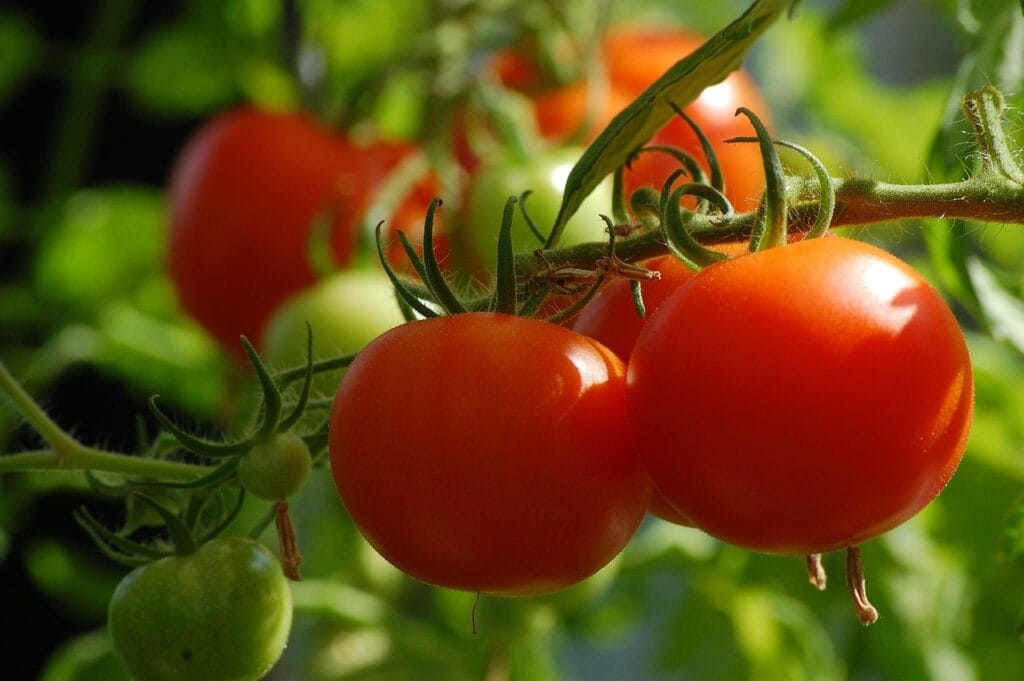

Tomatoes are heavy feeders and picky about their soil. If you want to grow tomato plants in pots that actually produce, don’t just grab a random bag of dirt from the garage.
Here’s what works: a high-quality potting mix, not garden soil. Garden soil is too dense for containers—it compacts easily, holds too much water, and chokes roots. Go for something light, airy, and rich in organic matter.
A solid potting mix for tomatoes should check these boxes:
- Loamy and well-draining.
- Full of nutrients, or at least ready to be amended.
- pH between 6.0 and 6.8 (you can test this with a cheap pH meter).
If you want to go the DIY route, here’s a simple mix:
- 60% high-quality potting soil.
- 20% compost (homemade or store-bought).
- 10% perlite or vermiculite (for drainage and aeration).
- 10% worm castings or aged manure (for a natural nutrient boost).
You can also mix in a slow-release organic fertilizer before planting, especially one made for veggies or tomatoes. That gives your plant a nice start and helps avoid nutrient deficiencies early on.
A quick note about moisture: Tomatoes like moist (not soggy!) soil. If you’re in a hot, dry climate, adding a layer of mulch—like straw or shredded leaves—on top of the soil can help lock in moisture and keep the roots cooler.
You may also like:
Planting Tomato Seedlings in Pots
Alright, you’ve got your pot, your mix, and your chosen tomato plant. Now it’s time to actually plant the thing.
If you want to grow tomato plants in pots that take off fast and stay strong, how you plant them really matters.
Here’s the trick: bury part of the stem. Tomatoes grow roots along their stems, so the more stem you put underground, the stronger the root system will be.
Let’s break it down step-by-step:
- Fill your container about two-thirds full with your prepared potting mix.
- Remove the lower leaves from the seedling—just the bottom two sets.
- Place the plant deep into the soil, up to those top remaining leaves.
- Backfill with more mix, pressing gently to hold the plant in place.
- Water thoroughly right after planting to settle everything in.
After that, it’s time for support. Even if you picked a determinate variety, a small stake, cage, or trellis is still a good idea. It helps prevent the plant from flopping over once fruit starts forming.
When should you plant? It depends on your climate. For most U.S. zones, late spring is ideal—after your last frost date. In the UK or cooler parts of Canada, aim for mid to late May. In Australia, it’s best to plant in early spring, around September (if you’re in the southern half of the country).
Just make sure your nighttime temps stay above 50°F (10°C). Tomatoes hate the cold.
You may also like:
How to Care for Tomato Plants in Pots
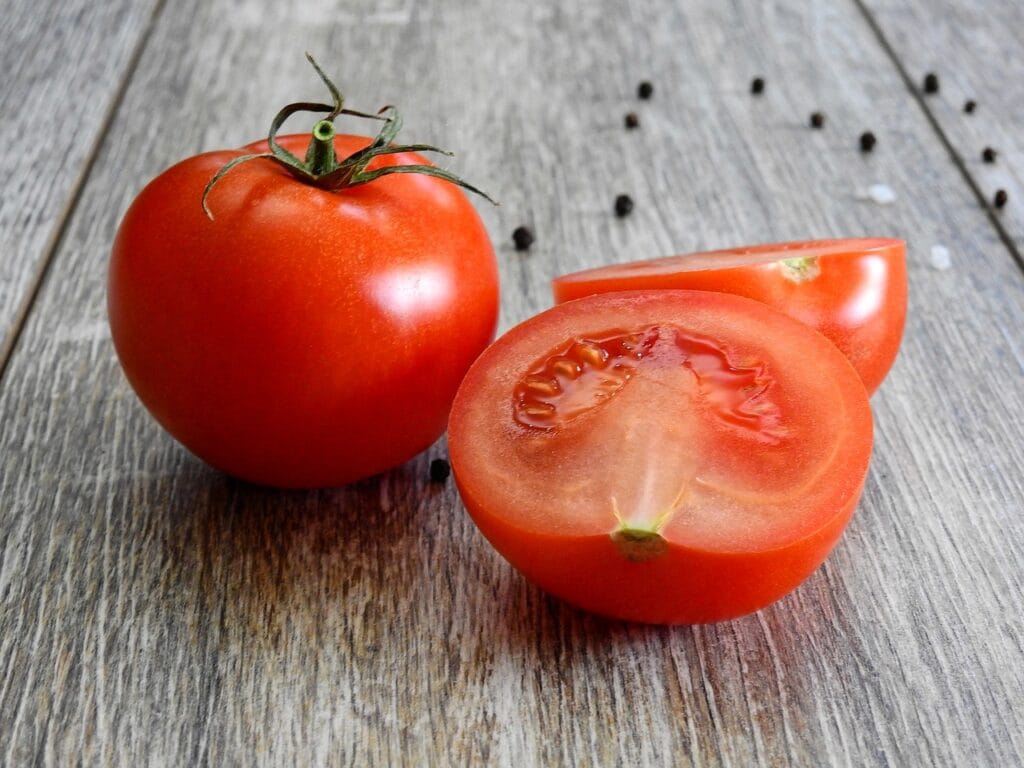

Once your tomato plant is in the pot, the real work (and fun) begins. Learning how to grow tomato plants in pots isn’t just about planting—it’s about keeping them alive, happy, and productive.
Let’s start with watering. Tomatoes in containers dry out faster than in-ground plants. On warm days, you might need to water them daily—sometimes even twice if it’s hot and windy.
The goal is to keep the soil moist but never soggy. Stick your finger into the soil; if the top inch feels dry, it’s time to water. Try to water at the base, not the leaves, to avoid fungal issues.
Now, sunlight. Tomatoes love the sun—like, really love it. Aim for at least 6–8 hours of direct sunlight a day.
No bright light? No tomatoes. If your patio only gets morning light, consider moving your container throughout the day to chase the sun (yep, tomato plants are that dramatic).
Next up: support. Even compact tomato varieties benefit from a little help. Use a small cage, bamboo stakes, or even a string trellis to keep the plant upright. It improves airflow and keeps fruit off the soil.
For feeding, tomatoes are heavy feeders. A week or two after planting, start using a balanced liquid fertilizer every 2–3 weeks.
Once the plant begins to flower, switch to something with a bit more phosphorus and potassium to boost fruit production (look for a ratio like 5-10-10).
And don’t forget pruning. For indeterminate varieties, remove those little suckers that pop up between the main stem and branches.
It helps focus the plant’s energy on fruit, not foliage. For determinate types, pruning is optional—just tidy them up if they start getting messy.
You may also like:
Common Problems and How to Avoid Them
Even if you’re doing everything right, things can still go sideways. That’s just gardening.
But when you know what to watch for, it’s way easier to fix problems before they ruin your plant. If you’re serious about learning how to grow tomato plants in pots, this section is non-negotiable.
Let’s start with overwatering—the most common mistake. When roots sit in soggy soil, they can’t breathe. Leaves turn yellow, growth slows down, and before you know it, you’ve got root rot.
Solution? Make sure your pot has drainage holes, don’t let it sit in water, and water only when the top inch of soil is dry.
Next up: blossom end rot. You’ll know it when you see brown, leathery spots on the bottom of your tomatoes.
It’s not a disease—it’s a calcium deficiency, often caused by inconsistent watering. Keep the soil moisture steady, and use a tomato fertilizer with calcium if needed.
Pests? Yep, they’ll find your potted plants too. The most common ones:
- Aphids – tiny green or black bugs that cluster on stems.
- Whiteflies – small white insects that flutter when you shake the plant.
- Spider mites – almost invisible but leave a fine webbing.
Use insecticidal soap or neem oil to deal with most pests. And check the undersides of leaves regularly—they love to hide there.
Seeing curled leaves or weak growth? It could be too much fertilizer or too little sun.
And if your plant’s growing like crazy but not producing fruit? It might not be getting pollinated. A gentle shake or a soft brush on the flowers can help move pollen around.
Pro Tips & Secrets for Thriving Potted Tomato Plants
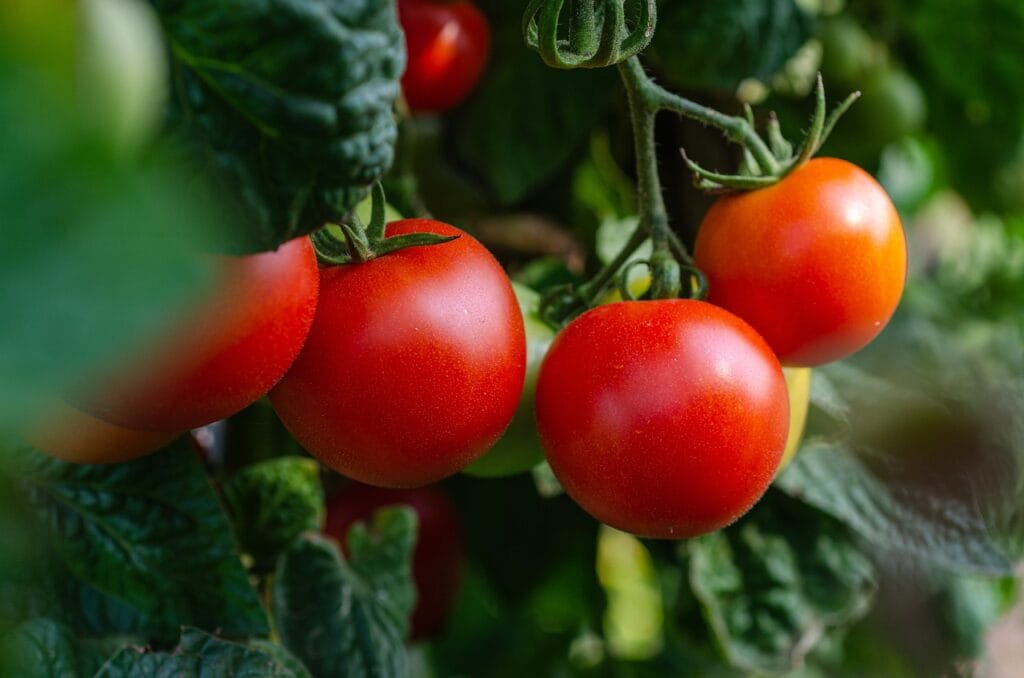

You’ve got the basics down. But if you want to squeeze the absolute best out of your container tomatoes, these tips will give you an edge.
They’re small things—but they make a big difference when you’re trying to grow tomato plants in pots that actually produce.
1. Try companion planting—even in containers
Yep, you can still plant buddies in pots. Basil is a tomato’s best friend. It helps repel pests and supposedly boosts flavor (some gardeners swear by it). Marigolds can also help keep whiteflies and aphids away, and they’re pretty.
2. Mulch, even in a pot
Most people skip this step with containers, but a thin layer of straw, dried leaves, or even shredded newspaper helps retain moisture, keeps the soil cooler, and blocks weeds. Bonus: it also reduces splash-back, which can spread disease.
3. Rotate your pots
If one side of the plant is always facing the sun, the growth can get lopsided. Every few days, give the container a spin. Even light = even growth. Simple but super effective.
4. Use Epsom salt—sparingly
Some gardeners like to add a tablespoon of Epsom salt (magnesium sulfate) to the soil when planting, or dissolve it in water and spray the leaves. It can help prevent yellowing and boost fruiting—but don’t overdo it. Once a month is plenty.
5. Clean up those lower leaves
Once your plant starts to fruit, snip off the bottom leaves that touch the soil or look sad. This improves airflow and reduces the risk of fungal problems.
6. Reuse your pots the smart way
Don’t just dump new soil in an old pot. Wash the container with soapy water, rinse with diluted vinegar, and let it dry. Clean pots = fewer diseases next season.
When and How to Harvest Tomatoes in Pots
So you’ve cared for your plant, watched it flower, and now—bam!—tomatoes.
But how do you know when to pick them? And how do you do it without messing up the plant?
Here’s the deal: if you want to grow tomato plants in pots successfully, timing your harvest is part of the job. Pick too early, and they’re bland. Wait too long, and they split or attract pests.
So, how do you know they’re ready?
- Color: Tomatoes should be fully colored—whether that’s red, yellow, orange, or purple, depending on the variety. No green shoulders or dull spots.
- Feel: They should have a little give when you squeeze gently. Not mushy—but not hard like a golf ball, either.
- Ease: Ripe tomatoes will come off the vine with a light twist or a gentle pull. If you have to yank it, it’s probably not ready.
And if you’re dealing with birds or sudden rainstorms, you can pick them slightly underripe (as long as they’re starting to color) and let them ripen indoors. Just leave them on the counter—not in the fridge.
To pick them: use your fingers or a small pair of scissors/pruners. Snip the stem right above the fruit, and try not to pull on the plant. If you break stems or branches, you risk stressing it or opening it up to disease.
Store harvested tomatoes at room temperature, out of direct sunlight. Don’t refrigerate unless they’re starting to go soft—cold ruins the texture.
And hey, don’t be surprised if the first few tomatoes are smaller or slower to ripen. Once your plant gets going, the fruit will come faster and more consistently.
Conclusion
So, how do you grow tomato plants in pots? Simple: pick the right variety, use a big enough container with good drainage, fill it with quality potting mix, and give your plant sunlight, water, and support. That’s it.
Sure, there are details to fine-tune along the way—but now you’ve got those too. You know how to plant, feed, troubleshoot, and harvest like someone who’s done this before (even if it’s your first time).
Container gardening puts fresh, homegrown tomatoes within reach—literally. Doesn’t matter if you’ve got a tiny balcony or just a sunny front step. With the right setup, your pots can be just as productive as a full garden bed.
You’ve got the tomatoes down—but why stop there? Check out our complete guide on how to grow and care for roses. It’s everything you need to grow stunning roses at home—even in pots.
FAQ – Tomato Plants in Pots
1. How many tomato plants can I grow in one pot?
One plant per pot is best, unless you’re using a large container (at least 15 gallons). Crowding leads to competition and poor airflow.
2. Can I grow tomatoes indoors in pots?
Yes, but they need 6–8 hours of direct light. If you don’t have a bright window, use a grow light to keep them happy.
3. How often should I water tomato plants in pots?
Usually every 1–2 days, depending on heat and humidity. Check the top inch of soil—if it’s dry, water deeply.
4. What’s the best soil for tomatoes in containers?
A loose, well-draining potting mix with compost, perlite, and balanced nutrients. Avoid dense garden soil.
5. Do tomato plants in pots need fertilizer?
Yep. Start with a slow-release mix, then use a balanced liquid fertilizer every 2–3 weeks during the growing season.
6. What’s the best tomato variety for small spaces?
Compact or bush types like Tiny Tim, Patio Princess, or Tumbling Tom are great for container growing.
7. Why are my tomatoes turning brown on the bottom?
That’s blossom end rot—usually caused by uneven watering or calcium deficiency. Keep moisture consistent and use a tomato fertilizer.
8. Can I reuse the soil from last season?
It’s possible, but risky. Used soil can carry diseases. If you reuse it, refresh with compost, perlite, and organic fertilizer—and consider sterilizing it first.


